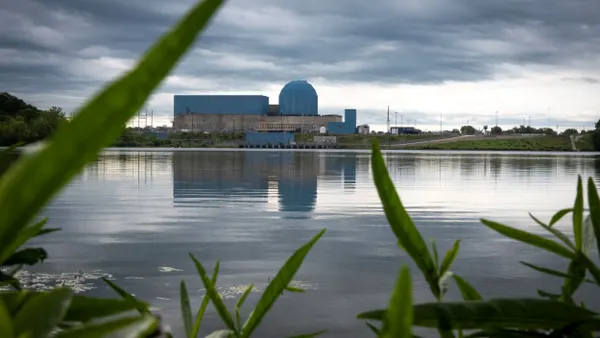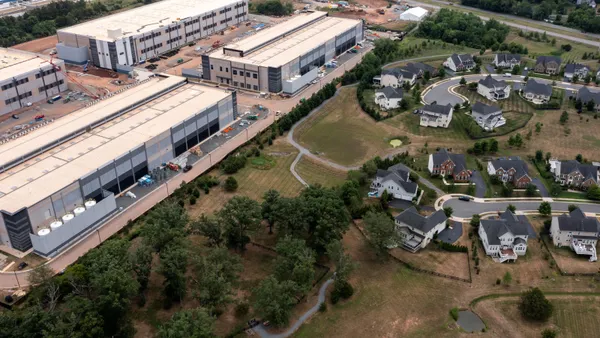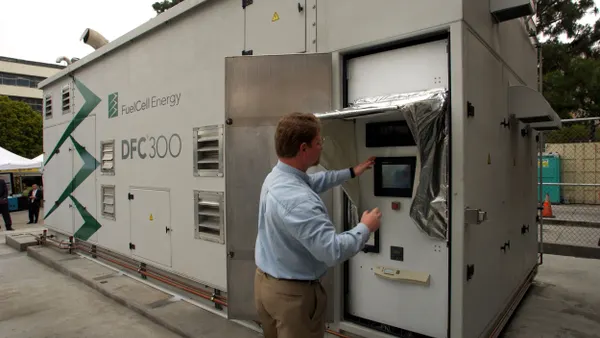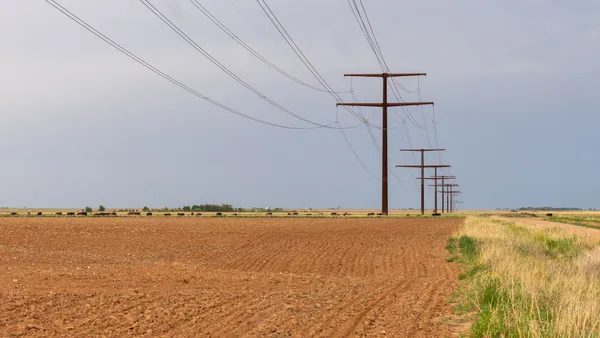Dive Brief:
-
Gas-fired power is likely to continue to dominate U.S. electricity generation this summer while coal-fired generation continues to lose market share, according to the Energy Information Administration's (EIA) most recent Short Term Energy Outlook (STEO).
-
The EIA report says gas-fired power plants are on track to supply 37% of the electricity produced this summer, coming close to the record hit in the summer of 2016.
-
Coal-fired generation, on the other hand, is expected to drop slightly to 30% this summer, continuing a multi-year trend, the EIA said.
Dive Insight:
Several factors have come together over the last decade or so to make gas-fired generation the leading source of U.S. electricity generation. Among the factors that the EIA's STEO cites are relatively low natural gas prices, environmental regulations, and supportive renewable energy policies.
That combination has led to the addition of 5.4 GW of new gas-fired capacity in the first four months of 2018 with another 15 GW scheduled to come online by year end. If all those projects come online, it would be the largest increase in natural gas capacity since 2004, according to EIA data. In contrast, more than 10 GW of coal-fired capacity retired in the 12 month period that ended in April.
The primary driver is the rise of gas-fired generation has been the price of natural gas. The agency, part of the U.S. Department of Energy, forecasts the average cost of gas as 2% lower than the average cost last summer. In the three years between 2015 to 2017, the cost of natural gas delivered to electric generators averaged $3.16 per million Btu (MMBtu) compared with $7.69/MMBtu between 2006 and 2008, according to the EIA.
In contrast, the EIA forecasts the cost of coal delivered to electric generators will rise slightly this summer.
Renewables have also been growing rapidly but they have a long way to go to catch up with the dominance of conventional fossil generation. Developers added 2.6 GW of utility-scale solar and wind generating capacity during the first four months of the year, with an additional 9.6 GW scheduled to come online by the end of 2018.
The exception to the dominance of gas-fired generation is the West where EIA forecasts gas-fired generation will decline as renewable generation increases. Nearly 2 GW of utility-scale solar capacity came online in the West in the 12 months that ended in April. The EIA forecasts that, in the West, generation from renewable resources, other than hydropower, will increase to 16% this summer, up from 14% last summer.
In January, the EIA said it expected about 25 GW of new utility-scale capacity would be added in 2018, nearly half of which was in the form of renewable technologies. Most of the renewable capacity came online in the last months of the year in order to meet eligibility deadlines, especially for federal tax incentives.













